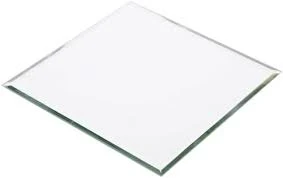

Toughened Float Glass An Overview
Toughened float glass, also known simply as tempered glass, has emerged as a cornerstone in both commercial and residential applications due to its exceptional strength, safety features, and versatility. This article explores what toughened float glass is, its manufacturing process, benefits, applications, and considerations for its use.
Understanding Toughened Float Glass
Toughened float glass begins with standard float glass, which is made by floating molten glass on top of molten tin to create a smooth, uniform, and flat surface. The term float glass refers to this manufacturing method. What sets toughened float glass apart is its unique treatment process. After being cut to size, the glass is heated to around 620–650°C and then rapidly cooled. This tempering process strengthens the surface of the glass while compressing its outer layers, which enhances its resistance to impact and thermal stress.
The Manufacturing Process
The manufacturing process of toughened glass involves several key steps
1. Production of Float Glass Initially, raw materials such as silica sand, soda ash, and limestone are melted in a furnace to form glass. The molten glass flows onto a bed of molten tin, creating a smooth and flat surface as it cools.
2. Cutting and Preparation Once the float glass has cooled, it is cut into specific sizes and shapes. Any edges are typically ground to reduce the risk of chips or cracks during handling.
3. Tempering The cut glass sheets are then placed in a tempering furnace. They are heated to the specified temperature and held there for a predetermined period, allowing the glass to fully absorb heat. The rapid cooling that follows introduces compression to the surface, significantly increasing its strength and making it more resistant to thermal stress.
4. Quality Control After tempering, the glass is thoroughly inspected for uniform thickness, clarity, and absence of defects. Quality control is vital, as any imperfections can compromise the safety and integrity of the glass.
Benefits of Toughened Float Glass
Toughened float glass boasts numerous advantages
1. Strength and Durability The tempering process imparts a significant increase in strength, making toughened glass up to five times stronger than standard float glass. This makes it ideal for high-traffic areas where impact resistance is critical.

2. Safety When broken, toughened glass shatters into small, blunt pieces rather than sharp shards, minimizing the risk of injury. This safety feature makes it a preferred choice for buildings, vehicles, and other applications where safety is paramount.
3. Thermal Resistance Toughened glass exhibits excellent resistance to thermal stresses. It can endure high temperatures and sudden changes without breaking, making it suitable for applications like shower doors and glass facades.
4. Versatility This type of glass can be produced in various thicknesses and treated with different coatings, such as low-emissivity (Low-E) coatings. It is also suitable for printing and applying graphics, broadening its range of applications.
Applications of Toughened Float Glass
Given its many benefits, toughened float glass is increasingly used in a variety of settings
- Architectural Applications Commonly found in commercial and residential buildings, toughened glass is used for windows, facades, doors, and partitions due to its aesthetic appeal and structural integrity.
- Automotive Use Toughened glass is prevalent in car windows and windshields, where strength and safety are highly prioritized.
- Furniture Design Many designers use toughened glass in tabletops, shelves, and other furniture pieces, as it adds a modern touch and durability.
- Shower Enclosures Due to its resistance to water and steam, toughened glass is a common choice for shower doors and enclosures.
Considerations
While toughened float glass has many advantages, there are also considerations to take into account. The installation process requires skilled handling and precise measurements, as it cannot be cut or altered after tempering. Furthermore, the thermal properties of toughened glass mean that its edges need to be handled carefully to avoid thermal breakage.
Conclusion
In summary, toughened float glass represents a significant advancement in glass technology, combining strength, safety, and versatility. As it continues to find applications in architecture, automotive, and design, its importance in creating functional yet aesthetically pleasing environments cannot be overstated. Whether you are an architect, designer, or homeowner, understanding the benefits and applications of toughened float glass can help you make informed decisions for your projects.